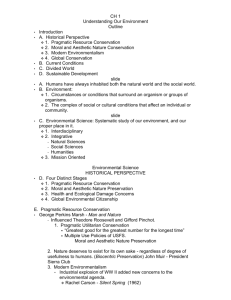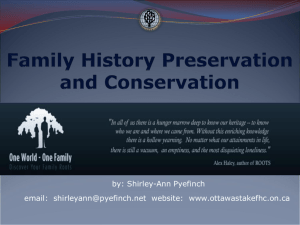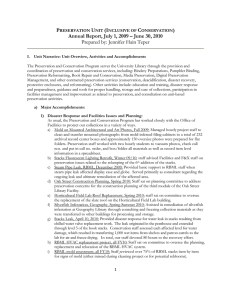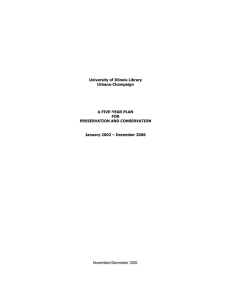Environmental Resources Unit A Natural Resources
advertisement
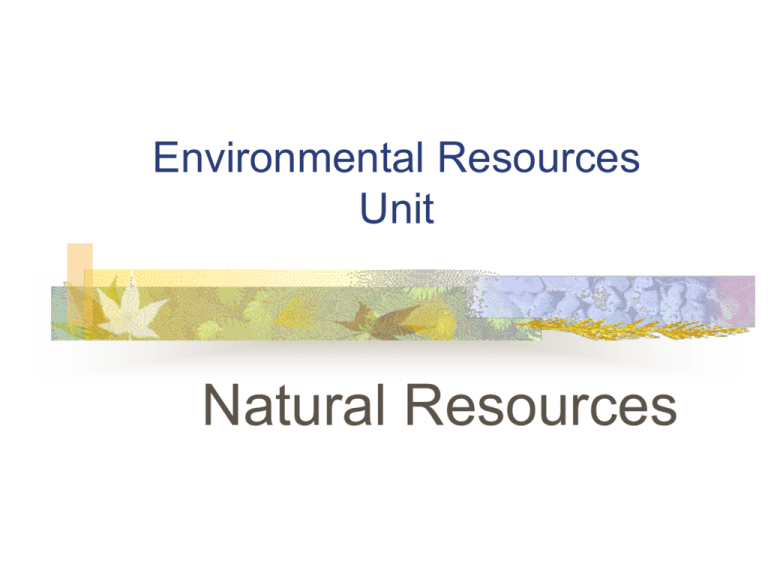
Environmental Resources Unit Natural Resources Problem Area Introduction to Natural Resources Comprehending Natural Resource Conservation Lesson What would you do? With a dirty or discolored glass of water? Would you throw it away? Why or why not? Where should it be disposed? What was wrong with the water? What does conservation mean to you? Learning Objectives Explain the importance of conservation and preservation. Identify the effects of humans on the environment. Identify types of natural resource damage. Terms Conservation Conservationist Landscape degradation Pollutant Pollution Preservation Preservationist Symbiotic relationship Conservation and Preservation Conservation and preservation provides the natural resources we have today. We wouldn’t have fossil fuels to heat our homes or to run our vehicles. Other natural resources needed to feed and clothe us may no longer exist either. Conservation The wise use of our natural resources. Conservation is necessary in order to continue to meet our needs and maintain our standard of living. Examples of conservation include avoiding waste, reusing, and recycling. Conservationists People who study and promote conservation and believe that natural resources should be used responsibly. Preservation Choosing not to use our natural resources. An example of preserving a natural resource would be to view trees for their beauty rather than use them for paper or to build homes. Someone who believes in and promotes preservation is called a preservationist. Humans and the Environment Humans affect the environment in a number of ways. Some ways are positive, others are negative. The best relationship between humans and their environment would be a symbiotic one. Symbiotic Relationship A beneficial relationship between different species of organisms. Human Needs People have three basic needs, food, water, and shelter. In order for people to survive they must use natural resources. People need water to drink and bathe in and food to eat. Natural resources are also needed to build houses or for other forms of shelter. Human Needs The best way to use natural resources is to make a plan and use them wisely. Waiting until the water runs out is not the right time to decide what we’ll do without it. Natural Resource Damage The three main types of natural resource damage are pollution, loss and lowered quality. Each of these types of damage are serious and costly to the environment. They are also costly to the people and wildlife that live there. Pollution Release of hazardous materials into the environment. A pollutant is the material that causes pollution. Can cause damage to the environment by causing disease, reducing the growth rate of plants and animals, and by causing reproduction problems in plants and animals. Losses Can occur in any species or natural resource. One prime example of loss is the loss of soil particles to wind and water erosion. Wind and Water Erosion Once these soil particles are gone from an area they cannot be replaced. Landscape Degradation The reduction of the natural features of the land. This can be the result of mining, using heavy equipment, and the cutting of trees. Landscape Degradation These activities can cause the land to become less valuable and unappealing to look at. Review / Summary Explain the importance of conservation and preservation. Identify the effects of humans on the environment. Identify types of natural resource damage.








